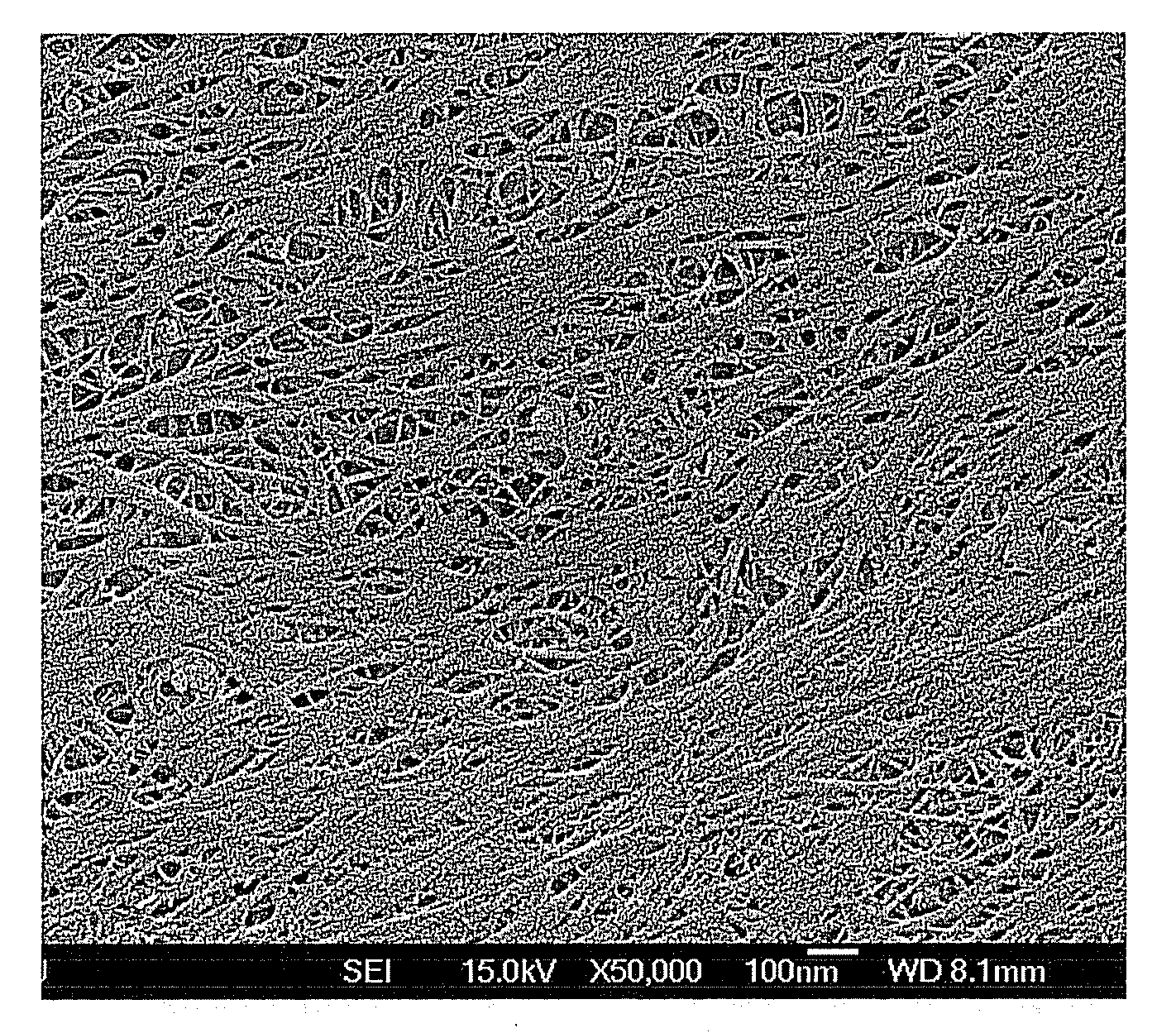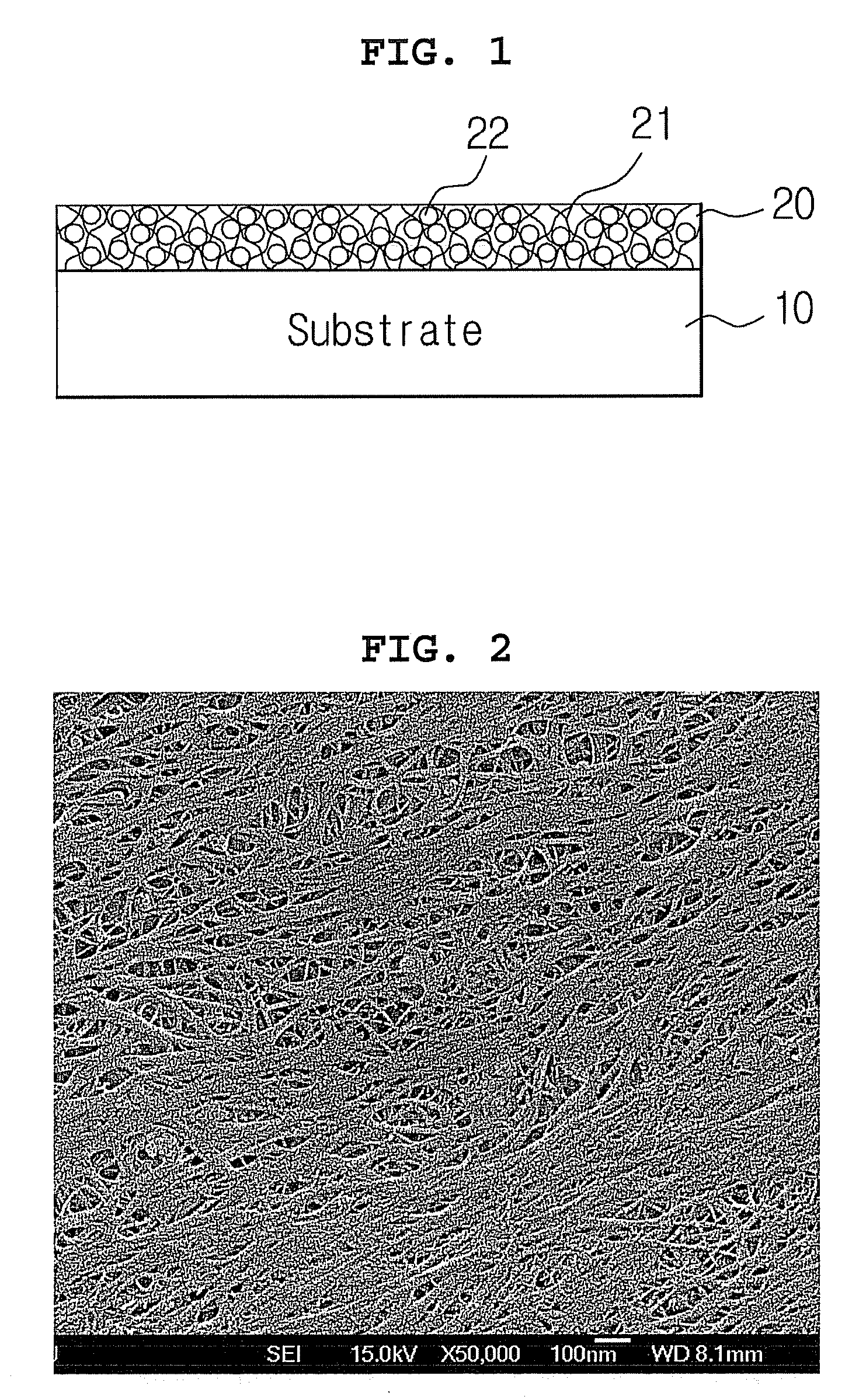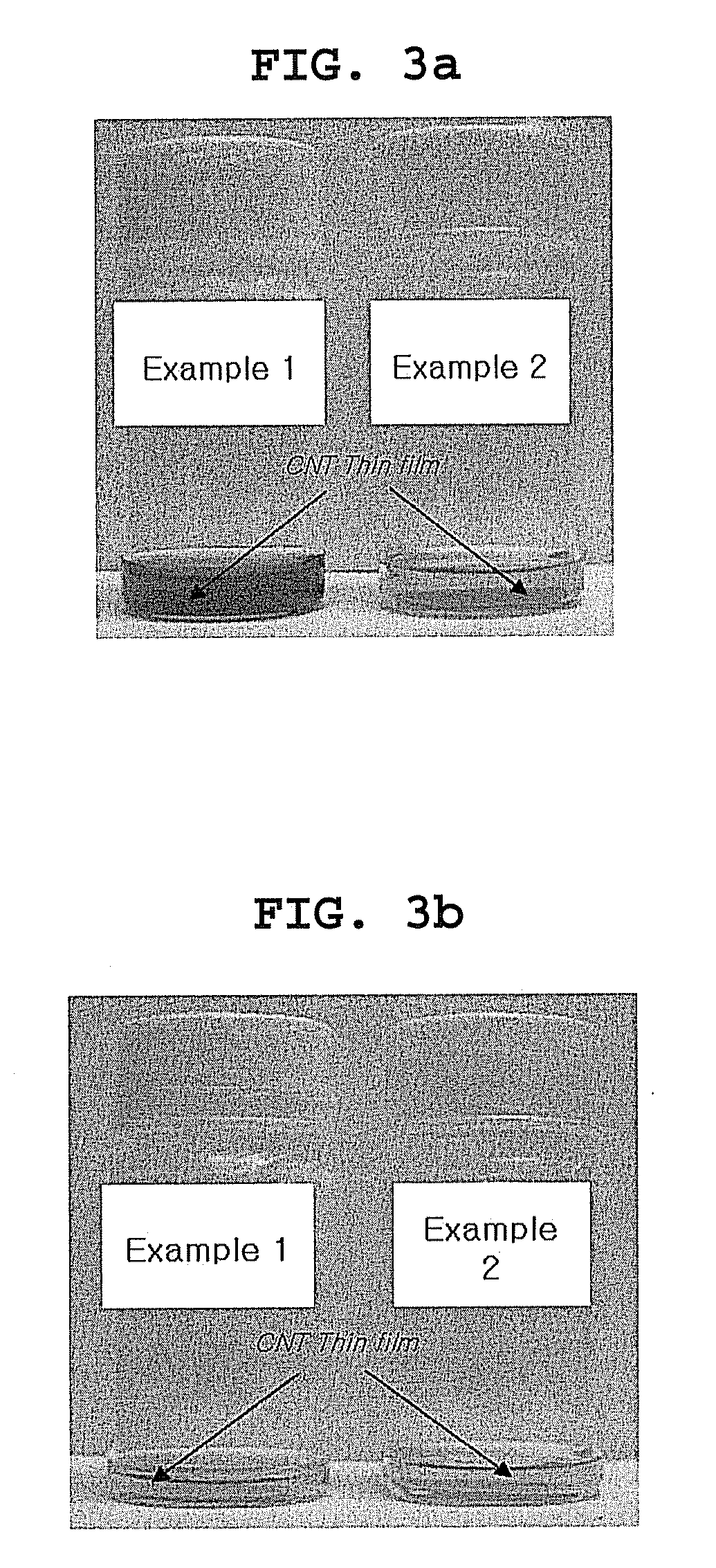Transparent carbon nanotube electrode using conductive dispersant and production method thereof
a technology of conductive dispersant and transparent carbon nanotube, which is applied in the direction of conductive layers on insulating supports, instruments, conductors, etc., can solve the problems of increased sheet resistance, inconvenient sputtering techniques for flexible display production, and production of transparent electrodes by sputtering techniques, etc., to achieve the effect of increasing conductivity
- Summary
- Abstract
- Description
- Claims
- Application Information
AI Technical Summary
Benefits of technology
Problems solved by technology
Method used
Image
Examples
example 1
[0081]i) Formation of CNT Thin Film
[0082]20 mg of a conductive dispersant represented by Formula 3 was dissolved in 20 ml of water, and then 20 mg of purified SWCNTs (single-walled carbon nanotubes) synthesized by an Arc-discharge process (Grade ASP-100F, ILJIN Nanotech Co., Ltd.) was added to the solution.
[0083]
[0084]For a conductive dispersant of Formula (3), Z is selected from the group consisting of —H, —CH3, —OH, carboxylic acid and its salts, sulfonic acid and its salts, and phosphoric acid and its salts, and n is an integer. For the present Example 1, Z in Formula (3) is a sulfonic acid sodium salt group, to provide the exemplary conductive dispersant, as used herein, having Formula (4).
[0085]
[0086]The conductive dispersant of Formula (4) as used herein had a molecular weight of 10,000 (n=37). The mixture was dispersed in a sonic bath for 10 hours, and centrifuged at 10,000 rpm for 10 minutes to prepare a CNT composition.
[0087]The CNT composition thus prepared was subjected t...
example 2
[0090]A transparent CNT electrode was produced in the same manner as in step i) of Example 1, except that a 0.1 M nitromethane solution of gold trichloride (AuCl3) was used as the dopant solution.
[0091]The sheet resistance was measured for a transparent CNT electrode produced in the same manner as in step i) of Example 1 but without doping (i.e., before doping), and for the transparent CNT electrodes produced in Examples 1 and 2 after doping, and a comparison of the results are shown in Table 1. The surface of the transparent CNT electrode produced in Example 1 was observed by scanning electron microscopy (SEM) (FIG. 2).
[0092]
TABLE 1Transparent CNTSheet resistanceRelative valueElectrodea(Ω / sq.)(%)Before doping817100After dopingExample 139448.27Example 211113.59aThe CNT electrodes have a visible light transmittance of 77% measured at 600 nm and a CNT thin film thickness of 150 nm and a transparent polyester substrate thickness of 150 μm.
[0093]Evaluation of Physical Properties of the ...
example 3
[0099]Transparent CNT electrodes were produced in the same manner as in Example 1, except that CNT thin films were formed on respective PET films treated with O2 plasma by spin coating. The transparent CNT electrodes thus produced had a visible light transmittance of 79.51% at 600 nm at a CNT thin film thickness of 150 nm and a PET film thickness of 150 μm. The transparent CNT electrodes were used to analyze effects according to the concentration of dopant solutions and the penetration time of dopants. At this time, nitromethane solutions having different concentrations (0.01 M and 0.1 M) of gold trichloride (AuCl3) were used as dopant solutions, dipping was performed for different times (10 minutes, 20 minutes, one hour, and 4 hours), and washing was performed by rinsing with a nitromethane solution three times and dipping in the rinsing solution for one hour. The washed structures were dried overnight at room temperature. The transmittance and sheet resistance of the transparent C...
PUM
| Property | Measurement | Unit |
|---|---|---|
| thickness | aaaaa | aaaaa |
| thickness | aaaaa | aaaaa |
| thickness | aaaaa | aaaaa |
Abstract
Description
Claims
Application Information
 Login to View More
Login to View More - R&D
- Intellectual Property
- Life Sciences
- Materials
- Tech Scout
- Unparalleled Data Quality
- Higher Quality Content
- 60% Fewer Hallucinations
Browse by: Latest US Patents, China's latest patents, Technical Efficacy Thesaurus, Application Domain, Technology Topic, Popular Technical Reports.
© 2025 PatSnap. All rights reserved.Legal|Privacy policy|Modern Slavery Act Transparency Statement|Sitemap|About US| Contact US: help@patsnap.com



